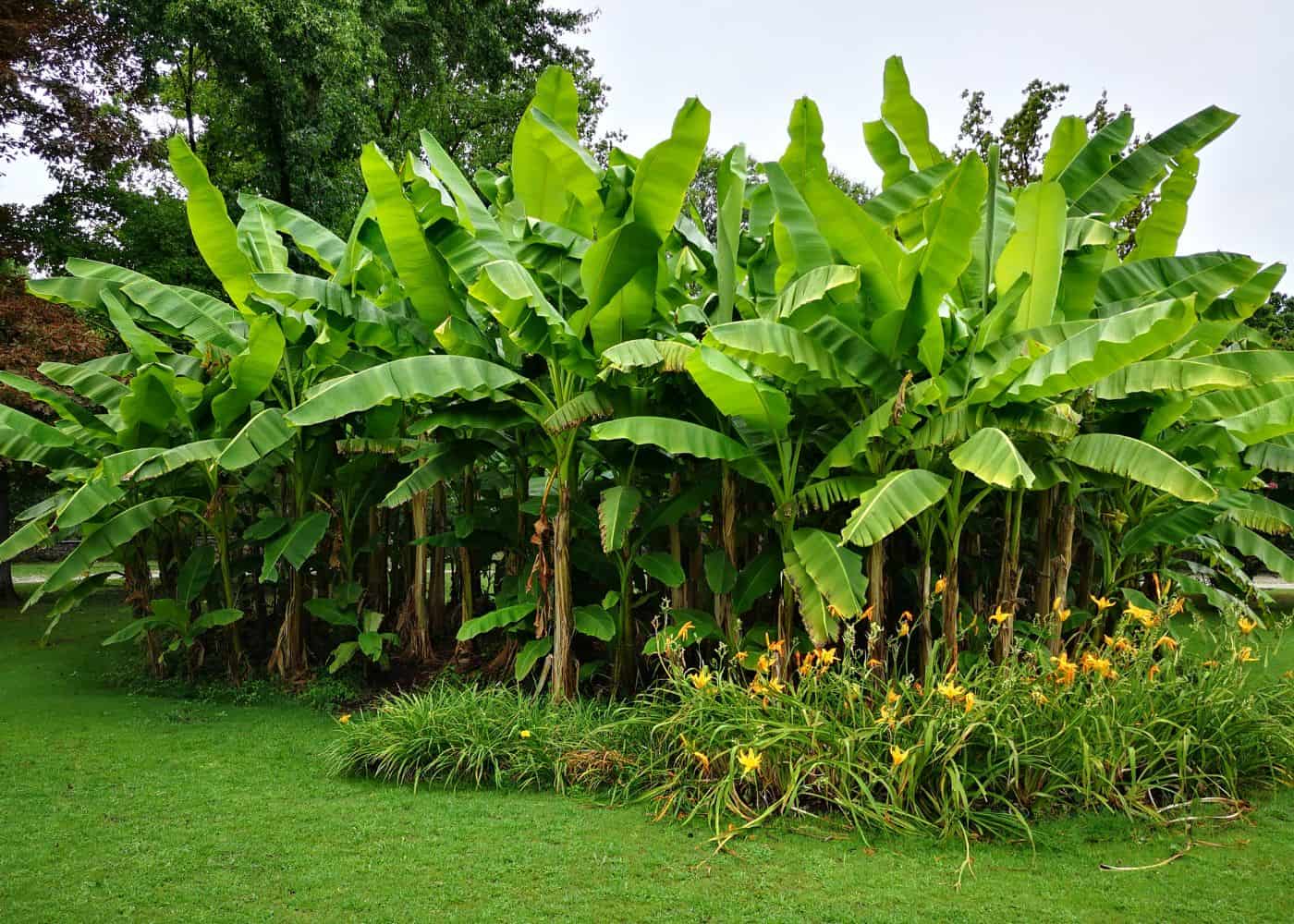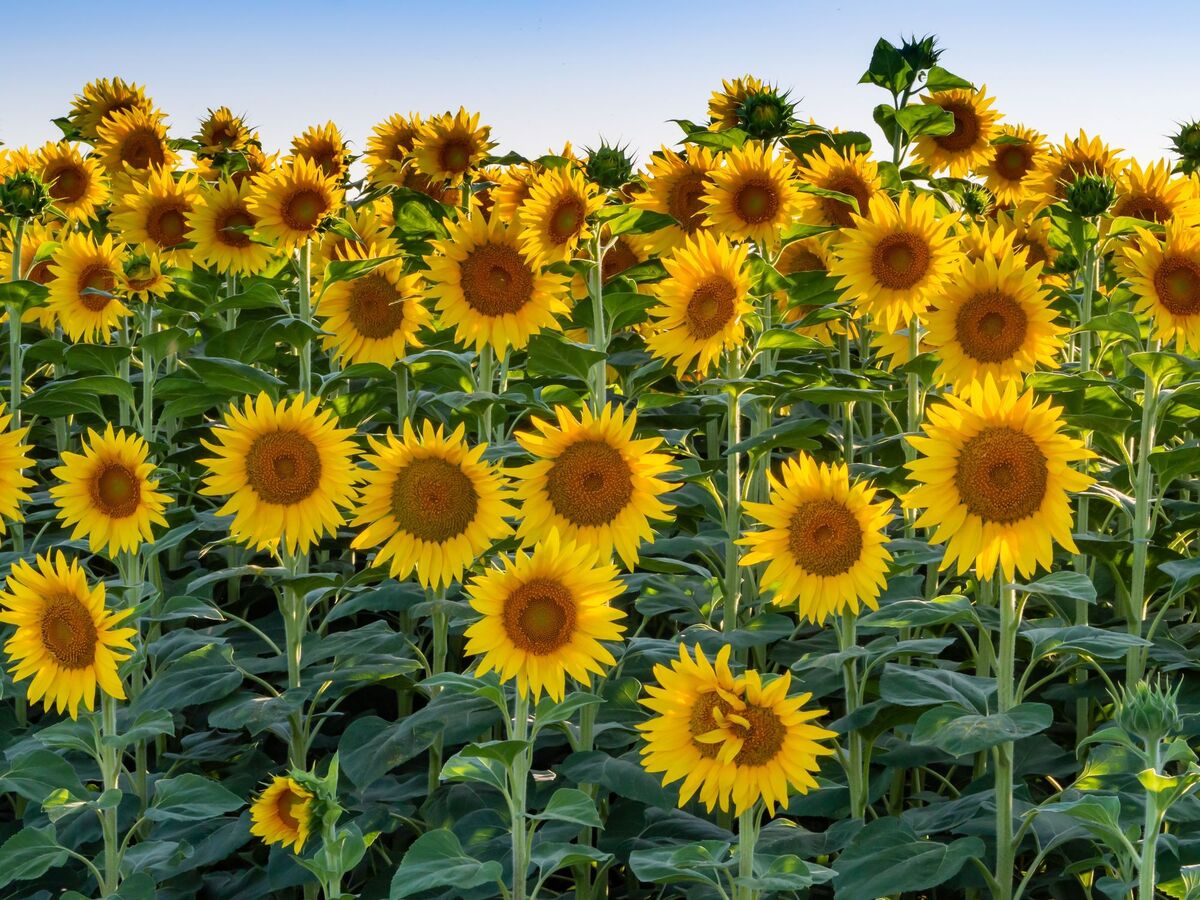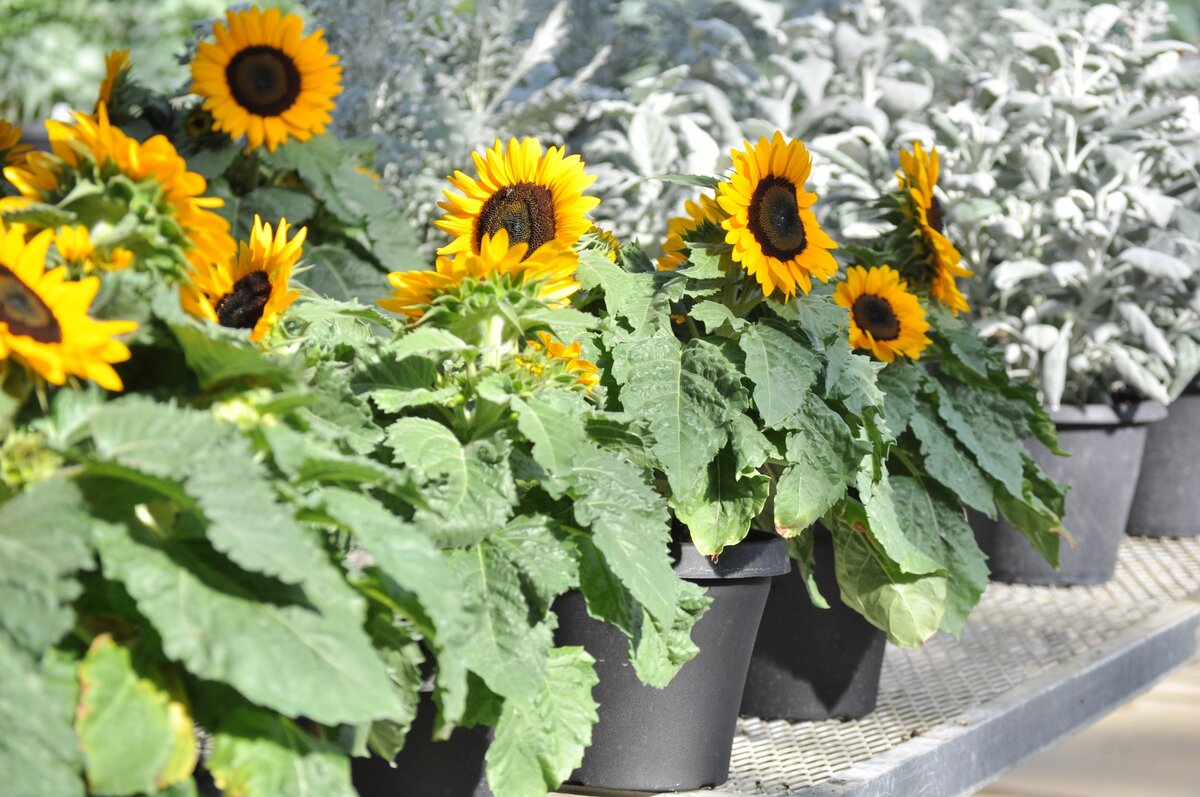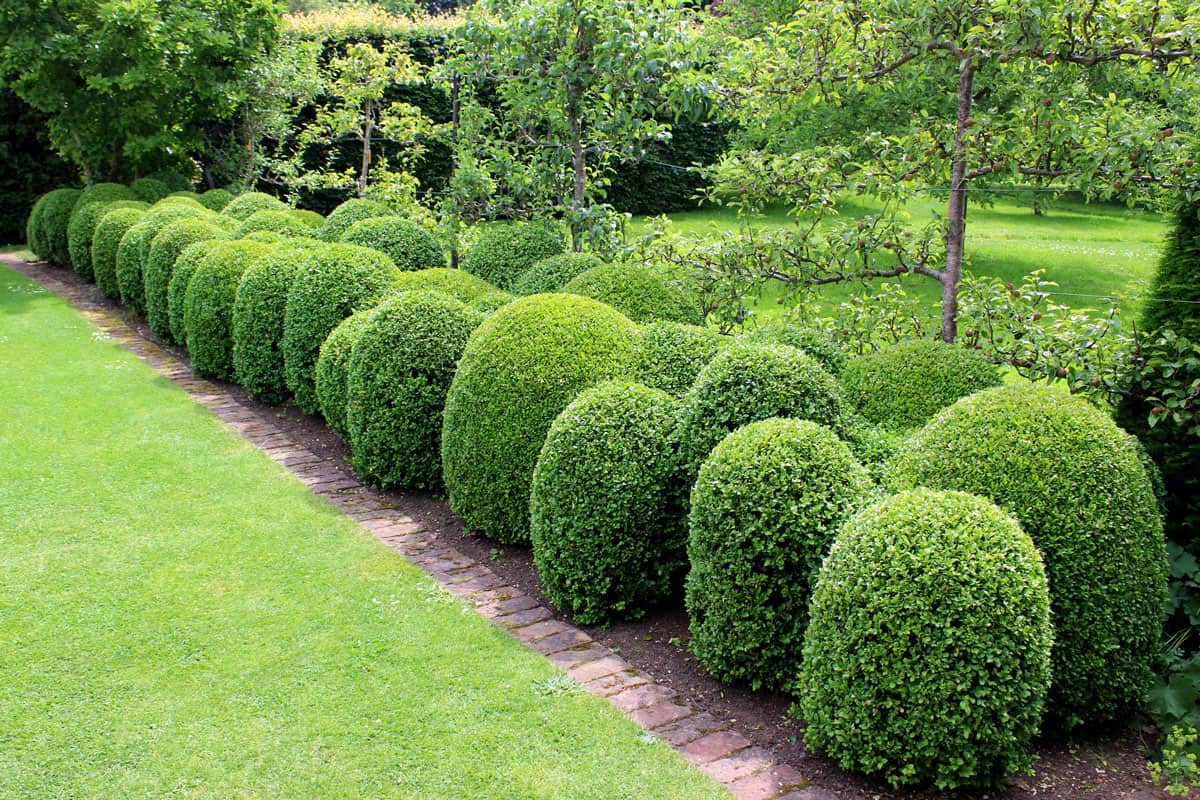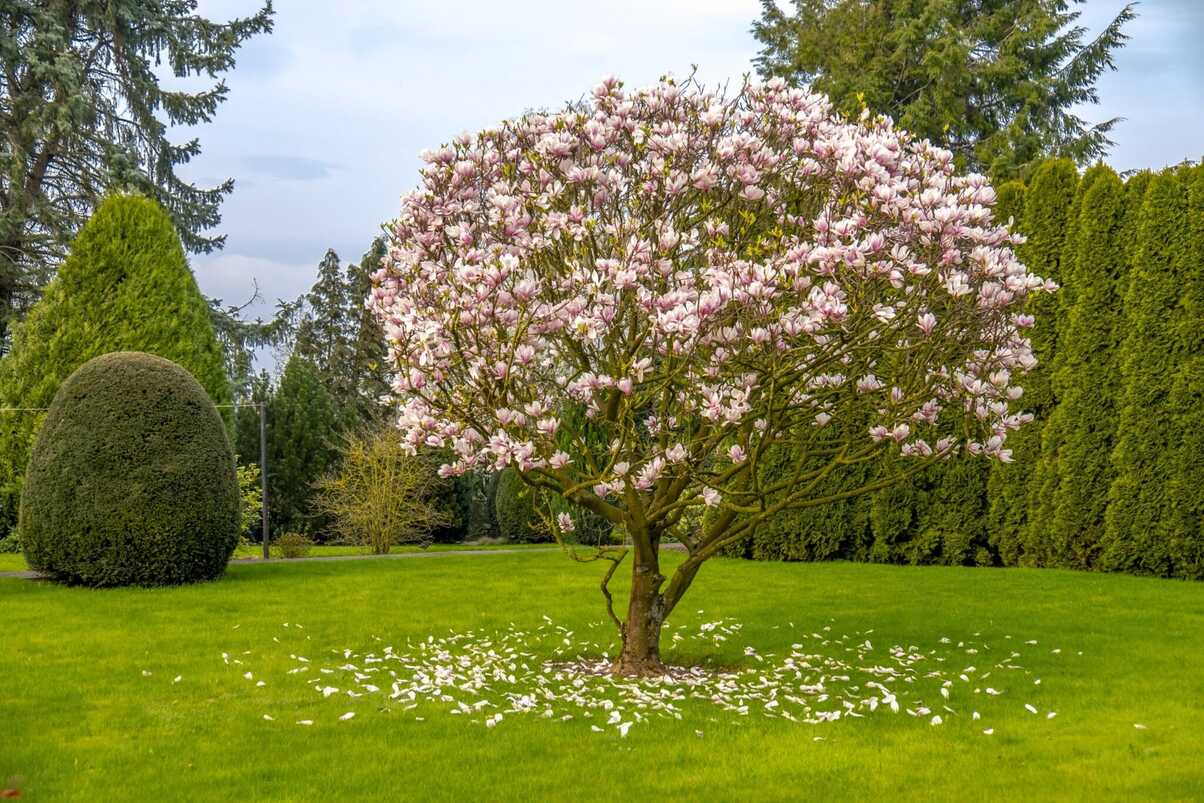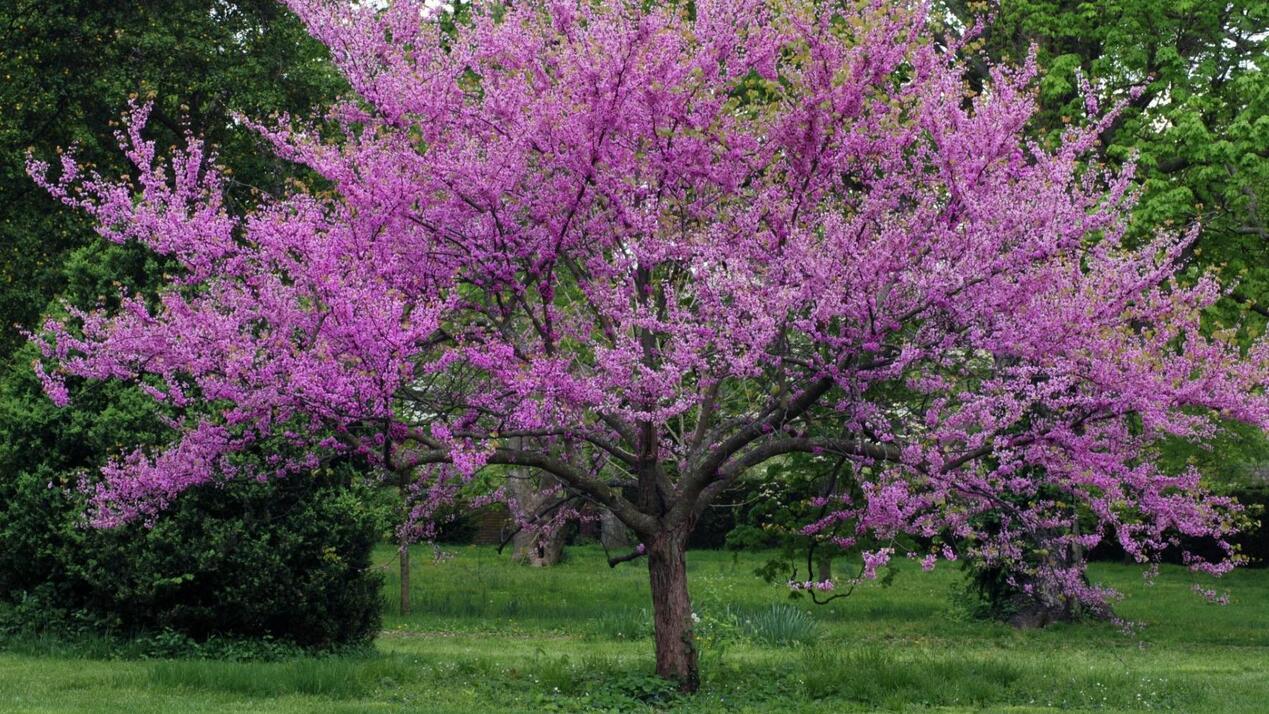Home>Gardening Techniques>Plant Care>How Tall Do Fig Trees Grow
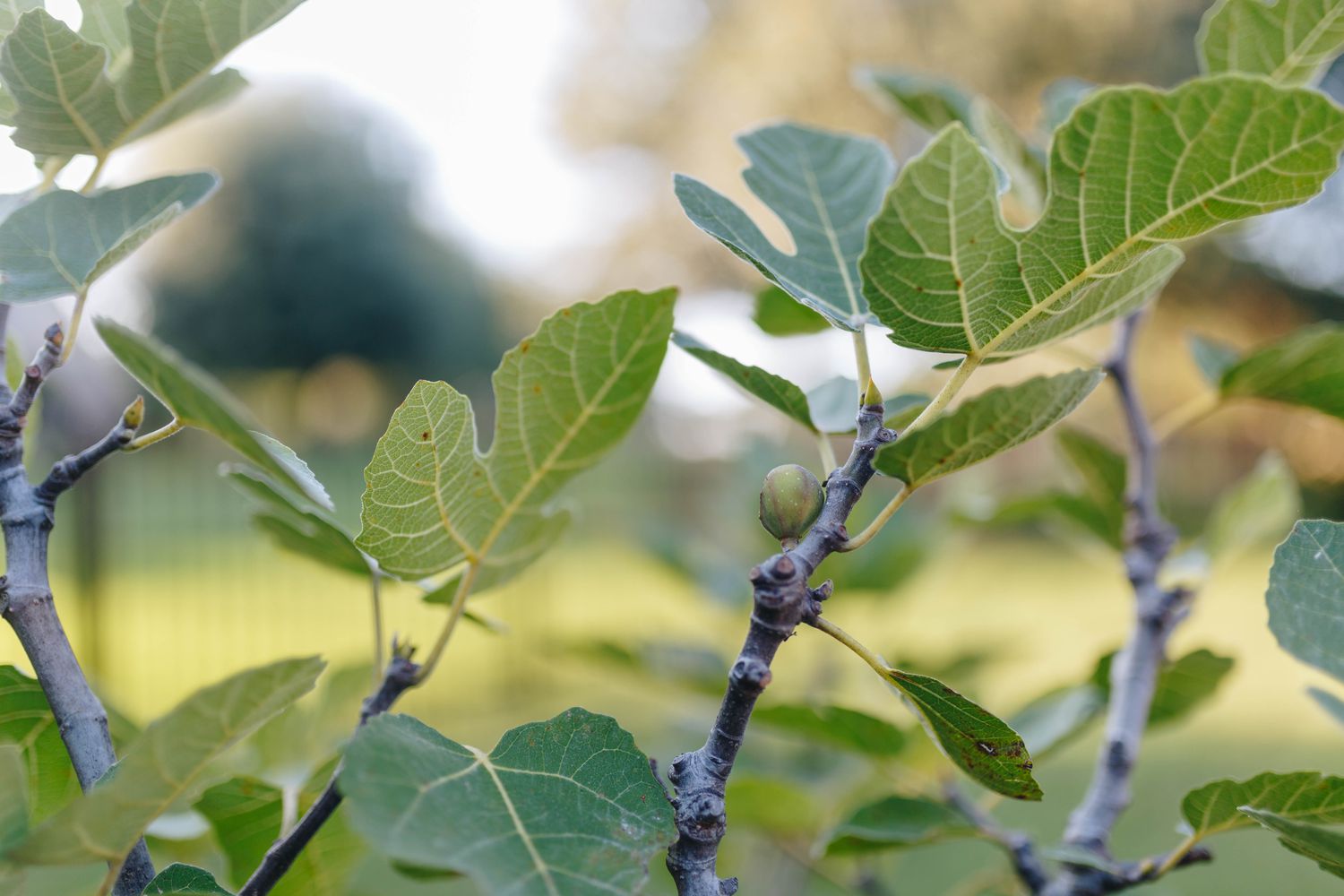

Plant Care
How Tall Do Fig Trees Grow
Modified: February 7, 2024
Learn about fig tree plant care and discover how tall fig trees can grow. Get expert tips and advice to maintain healthy fig trees in your garden.
(Many of the links in this article redirect to a specific reviewed product. Your purchase of these products through affiliate links helps to generate commission for Chicagolandgardening.com, at no extra cost. Learn more)
Table of Contents
Introduction
Welcome to the wonderful world of fig trees! Whether you are a seasoned plant enthusiast or a novice gardener, fig trees are a fantastic addition to any garden or even as a potted plant. Known for their delicious fruit and unique foliage, fig trees can provide beauty and bounty for years to come.
Fig trees, scientifically known as Ficus carica, are native to the Mediterranean region and have been cultivated for thousands of years. They are highly adaptable trees that can thrive in various climates, making them a popular choice among gardeners around the world. Besides their aesthetic appeal, fig trees also hold cultural and historical significance and are often associated with Mediterranean cuisine and ancient civilizations.
When properly cared for, fig trees can grow to impressive heights, adding an element of grandeur to any landscape. However, the ultimate height of a fig tree can vary depending on several factors, including the specific variety, growing conditions, and proper care.
In this article, we will explore the factors that affect the height of fig trees, discuss the ideal growing conditions for these plants, and provide valuable tips on pruning, training, and caring for your fig tree. We will also explore some common varieties of fig trees, address potential pests and diseases, and delve into the proper techniques for harvesting your figs.
So, whether you are a fig tree enthusiast looking to expand your knowledge or a beginner ready to embark on a plant care journey, let’s dive in and discover the secrets to growing tall and healthy fig trees!
Factors Affecting the Height of Fig Trees
The height of a fig tree is influenced by several factors, including genetics, growing conditions, pruning techniques, and overall care. Let’s delve deeper into these factors and understand how they can impact the vertical growth of your fig tree.
Genetics: Different varieties of fig trees have inherent differences in their growth potential. Some varieties naturally grow taller than others. When choosing a fig tree for your garden, it is essential to consider the expected height of the specific variety you are interested in. This will help you plan the spacing and overall layout of your garden, ensuring that the taller varieties have adequate room to grow.
Growing Conditions: The environmental factors in which a fig tree is planted play a crucial role in its growth. Fig trees thrive in full sun, ideally receiving at least 6-8 hours of direct sunlight each day. They prefer well-draining soil that is moderately fertile. Proper soil moisture and drainage are vital to prevent waterlogged conditions, which can hinder the growth of the tree. Additionally, fig trees are relatively drought-tolerant, but consistent watering during periods of dryness is essential to support healthy growth.
Pruning Techniques: Pruning is an essential aspect of fig tree care and can directly affect its height. Regular pruning helps promote a more compact and manageable tree form. By selectively removing unwanted branches and maintaining a balanced structure, you can control the overall height and shape of your fig tree. Pruning should be carried out during the dormant season, typically in late winter or early spring, when the tree is not actively growing.
Overall Care: Proper care and maintenance of your fig tree are vital for optimal height and growth. Providing regular fertilization with a balanced fertilizer can supply essential nutrients that may be lacking in the soil. Mulching around the base of the tree helps retain moisture, suppress weed growth, and regulate soil temperature. Regular monitoring for pests and diseases and taking prompt actions to address any issues will ensure that your fig tree remains healthy and continues to grow to its full potential.
By considering these factors and implementing appropriate practices, you can create an environment that encourages healthy growth and increases the chances of your fig tree reaching its maximum height potential.
Ideal Growing Conditions for Fig Trees
Providing the right growing conditions is essential for the successful cultivation of fig trees. While they are adaptable and can tolerate a range of conditions, providing the ideal environment will ensure optimal growth and fruit production. Let’s explore the key factors that contribute to the ideal growing conditions for fig trees.
Sunlight: Fig trees are sun-loving plants and thrive in full sun. They require a minimum of 6-8 hours of direct sunlight each day. When selecting a location for your fig tree, choose a spot that receives ample sunlight and is not shaded by larger trees or structures. Sufficient sunlight is crucial for the tree’s photosynthesis process and overall growth.
Soil: Fig trees prefer well-draining soil that is rich in organic matter. A loamy soil composition is ideal as it provides a good balance of moisture retention and drainage. It is recommended to amend the soil with compost or well-rotted manure before planting to improve its fertility. Fig trees can tolerate a variety of soil pH levels, ranging from slightly acidic to slightly alkaline, but a neutral pH around 6.0-7.0 is considered optimal.
Water: While fig trees are relatively drought-tolerant, consistent watering is crucial, especially during dry periods or when the tree is establishing its root system. Adequate soil moisture is essential for the tree’s growth and fruit development. Provide deep, infrequent watering rather than frequent shallow watering to encourage deep root penetration. Mulching around the base of the tree can help retain moisture and regulate soil temperature, reducing water stress on the tree.
Temperature: Fig trees thrive in temperate to Mediterranean climates with moderate temperature ranges. They prefer average daytime temperatures around 70-85°F (21-29°C) during the growing season. While they can tolerate higher temperatures, prolonged exposure to extreme heat can stress the tree. Protecting the tree from intense afternoon sun and providing adequate shading during heatwaves is beneficial.
Protection: Fig trees are relatively hardy, but they can be susceptible to strong winds and frost damage. Planting them in a sheltered location or providing windbreaks can help protect the tree from strong gusts. During colder months, covering the tree with frost blankets or providing adequate insulation can protect it from freezing temperatures.
By providing the ideal growing conditions, you will create an environment in which your fig tree can thrive. Remember to monitor the tree’s water needs, address any pest or disease issues promptly, and provide regular nutrient supplementation to ensure continued growth and productivity.
Pruning and Training Techniques for Fig Trees
Pruning and training fig trees are essential practices that help maintain their shape, control their size, and promote optimal fruit production. These techniques allow you to shape your fig tree according to your desired form and ensure its overall health. Let’s explore some effective pruning and training techniques for fig trees.
Pruning Techniques: Pruning fig trees is best done during the dormant season, typically in late winter or early spring before new growth begins. Here are some key pruning techniques:
- Removal of Dead or Diseased Wood: Start by removing any dead, damaged, or diseased branches. This helps promote overall tree health by preventing the spread of diseases and improves airflow within the tree’s canopy.
- Thinning Out: Thin out dense areas within the tree by selectively removing some of the smaller branches or those growing inwards towards the center. This allows more light and air to reach the remaining branches and encourages better fruiting.
- Renewal Pruning: Fig trees have a tendency to develop long, leggy branches. To promote new growth and maintain a more compact shape, selectively prune back some of the older, woody branches to encourage new shoots.
- Training Techniques: Training fig trees involves shaping and directing their growth to achieve a desired form. Here are some common training techniques:
- Single Trunk or Central Leader: This training method involves selecting a central upright branch to serve as the main trunk. All other lateral branches are pruned, except for a few well-spaced ones that are strategically positioned to become the main scaffold branches.
- Open Center or Vase-Shaped: In this method, the central leader is removed, and the tree is encouraged to develop multiple main branches with an open center. This allows for better light penetration and airflow within the canopy.
- Espalier: Espalier training involves training the branches of the fig tree to grow horizontally against a wall or support structure. This method maximizes space and can be visually appealing.
When pruning and training fig trees, it is essential to use clean, sharp pruning tools to make clean cuts and minimize the risk of infection. Remove any suckers that sprout from the base of the tree as they can compete with the main tree for resources.
Regular pruning and training efforts will help maintain the desired shape and size of your fig tree, improve its overall structure, and promote an abundance of high-quality fruits. Remember to prune selectively and avoid excessive pruning, as this can reduce fruit production.
Common Varieties of Fig Trees
Fig trees come in a wide array of varieties, each with its unique characteristics, flavor profiles, and growth habits. Whether you’re drawn to certain flavor notes or specific tree sizes, there’s a fig variety out there to suit your preferences. Let’s explore some of the most popular common varieties of fig trees:
Brown Turkey (Ficus carica ‘Brown Turkey’): Brown Turkey is one of the most popular varieties, known for its sweet, flavorful fruit and medium-sized tree. It produces large, purplish-brown figs with a reddish flesh. Brown Turkey fig trees are hardy and adaptable, making them suitable for various regions with mild to warm climates.
Black Mission (Ficus carica ‘Black Mission’): Black Mission fig trees are renowned for their dark purple-black fruit with a velvety texture and luscious, sweet flavor. This variety is considered one of the best for eating fresh. The tree grows to a medium size and is often used for landscaping purposes due to its attractive foliage and fruit.
Celeste (Ficus carica ‘Celeste’): Celeste fig trees are beloved for their small to medium-sized fruit with a rich, honey-like flavor. The figs are light to medium brown and have a tender, juicy texture. Celeste trees are relatively petite, making them suitable for smaller gardens or even container planting.
Chicago Hardy (Ficus carica ‘Chicago Hardy’): As the name suggests, Chicago Hardy is a cold-hardy fig variety that can withstand freezing temperatures more effectively than other fig varieties. The medium-sized tree produces medium to large, sweet figs. It is a popular choice for gardeners in colder regions or those looking for a fig tree that can tolerate winter frosts.
Kadota (Ficus carica ‘Kadota’): Kadota fig trees produce bright green, medium-sized figs with a sweet and mild flavor. The fruit has a virtually seedless interior and a firm texture, which makes it well-suited for drying and preserving. The Kadota variety is also known for its vigorous growth and tolerance to a variety of growing conditions.
Adriatic (Ficus carica ‘Adriatic’): Adriatic fig trees produce large, pale green to yellow figs with a delicate, sweet flavor. The fruit has a thin skin and a tender, juicy flesh, making it perfect for both fresh consumption and culinary uses. The Adriatic variety is known for its hardiness and ability to tolerate high humidity.
These are just a few examples of the many fig tree varieties available to gardeners. Each variety offers its unique flavor, texture, and growth characteristics. When selecting a fig tree for your garden or orchard, consider your climate, preferences, and available space to choose a variety that best suits your needs.
Pests and Diseases that Affect Fig Trees
Fig trees are generally hardy and resistant to many pests and diseases. However, they are susceptible to a few common issues that can impact their health and fruit production. By familiarizing yourself with these potential problems, you can take proactive measures to prevent and manage them effectively. Let’s explore some pests and diseases that can affect fig trees:
Fig Rust (Cerotelium fici): Fig rust is a fungal disease that primarily affects the leaves of fig trees. It appears as yellow-orange spots or pustules on the underside of leaves, eventually causing them to turn yellow and drop prematurely. Regular inspection of the foliage and prompt removal of affected leaves can help prevent the spread of fig rust. Fungicidal sprays may be necessary in severe cases.
Fig Mosaic Virus: Fig mosaic virus is a viral disease that causes mottled or mosaic patterns on the leaves of fig trees. Infected trees may exhibit stunted growth, reduced fruit production, and distorted leaves. To prevent the spread of the virus, it is important to purchase certified disease-free fig trees and avoid introducing infected plant material to your garden.
Fig Beetle (Cotinis mutabilis): Fig beetles are colorful insects that can cause damage to fruit crops, including figs. The adults feed on ripe or overripe fruit, creating shallow cavities and making them susceptible to rot and fungal infections. Handpicking the beetles or using sticky traps can help mitigate their impact on the fruit crop.
Fig Wasp (Blastophaga psenes): Fig wasps have a unique symbiotic relationship with fig trees, as they are responsible for pollinating the flowers and enabling fruit development. While fig wasps are beneficial for the fig tree’s reproduction, their presence can cause allergic reactions in humans. If allergies are a concern, it is best to choose pollinated varieties or opt for varieties that do not require fig wasps for fruit production.
Aphids (Aphidoidea): Aphids are small, soft-bodied insects that can infest the leaves and stems of fig trees. They feed by sucking the sap from the plant, causing stunted growth and distorted foliage. Natural predators like lady beetles and lacewings can help control aphid populations. In severe cases, insecticidal soap or neem oil can also be used.
Root Knot Nematodes (Meloidogyne spp.): Root knot nematodes are microscopic worms that can infect the roots of fig trees, causing swelling and galls. Infected trees may exhibit stunted growth, yellowing foliage, and reduced fruit production. Planting fig trees in nematode-resistant rootstocks and practicing crop rotation can help manage this issue.
It’s important to note that maintaining overall tree health through proper watering, fertilization, and pruning practices can help minimize the impact of pests and diseases. Regular monitoring, early detection, and appropriate action are key to addressing any issues promptly and ensuring the continued vigor of your fig tree.
Harvesting and Caring for Fig Trees
Harvesting ripe and delicious figs from your own tree is an exciting and rewarding experience. Proper care and attention throughout the growing season are crucial to ensure a bountiful harvest. Let’s explore some essential tips for harvesting and caring for fig trees:
Timing of Harvest: Fig fruits are best harvested when they are fully ripe. The exact timing will depend on the variety and prevailing weather conditions, but most figs are ready to be picked when they are soft to the touch, slightly drooping, and have deep coloration. Ripe figs will come off the tree easily with a gentle tug.
Harvesting Technique: To avoid damaging the fruit, gently cradle the fig in your hand and twist it gently from the branch. Alternatively, you can use a sharp pair of pruning shears to cut the stems about 1 inch above the fruit. Be careful not to squeeze or bruise the figs while handling them, as they are delicate and can bruise easily.
Caring for Mature Fig Trees: Once your fig tree reaches maturity, it will benefit from regular care and maintenance. Here are some important aspects to consider:
- Watering: While fig trees are relatively drought-tolerant, regular watering is crucial during dry periods, particularly during the fruiting season. Deep watering once a week is generally sufficient, but monitor soil moisture levels and adjust accordingly.
- Fertilization: Fig trees benefit from annual fertilization to replenish soil nutrient levels. Use a balanced organic fertilizer in early spring, following the package instructions for application rates. Avoid excessive nitrogen as it can lead to excessive leaf growth at the expense of fruit production.
- Pruning: Prune fig trees during the dormant season, removing any dead or diseased wood and thinning out overcrowded branches. Pruning helps open up the canopy, improve airflow, and promote better fruit development.
- Protection from Frost: In regions with frost-prone winters, protect your fig tree by covering it with blankets or burlap when temperatures drop below freezing. This helps prevent damage to the branches and buds.
- Regular Inspections: Monitor your fig tree for any signs of pests or diseases, such as yellowing leaves, spots, or unusual growth. Early detection allows for prompt action, reducing the risk of further damage.
By providing proper care, including regular watering, appropriate fertilization, and diligent pruning, you can ensure the continued health and productivity of your fig tree. Remember, fig trees are generally low-maintenance, but they will reward you with an abundance of delicious fruit when given the proper attention.
Conclusion
Cultivating fig trees can be a fulfilling and rewarding experience. Whether you are drawn to their delicious fruit, unique foliage, or the cultural and historical significance they hold, these trees can bring beauty and bounty to your garden or landscape. By understanding the factors that affect the height of fig trees, providing ideal growing conditions, utilizing proper pruning and training techniques, selecting suitable varieties, and addressing potential pests and diseases, you can ensure the success and longevity of your fig tree.
Remember, fig trees are adaptable and can thrive in various climates, making them a versatile choice for gardeners worldwide. By providing ample sunlight, well-draining soil, regular watering, and proper care, you can create an environment in which your fig tree can flourish. Utilizing pruning and training techniques allows you to shape and maintain the desired form and size of your tree while promoting optimal fruit production.
When selecting a variety of fig tree, consider your climate, taste preferences, and available space. Whether you choose the sweet flavors of Brown Turkey or the velvety texture of Black Mission, there is a plethora of options to suit your personal preferences.
Furthermore, vigilance in monitoring for potential pests and diseases, along with timely remedial actions, can help protect the health and productivity of your fig tree. By providing proper care and attention throughout the growing season, you can enjoy the satisfaction of a bountiful harvest and the beauty of a healthy fig tree in your garden.
So, whether you are a seasoned gardener or just getting started, let the captivating allure of fig trees inspire you to embark on a journey of plant care. With the knowledge and tips shared in this article, you are well-equipped to foster the growth and success of your own fig tree. Enjoy the process, savor the fruits, and delight in the beauty that fig trees bring to your outdoor space.

